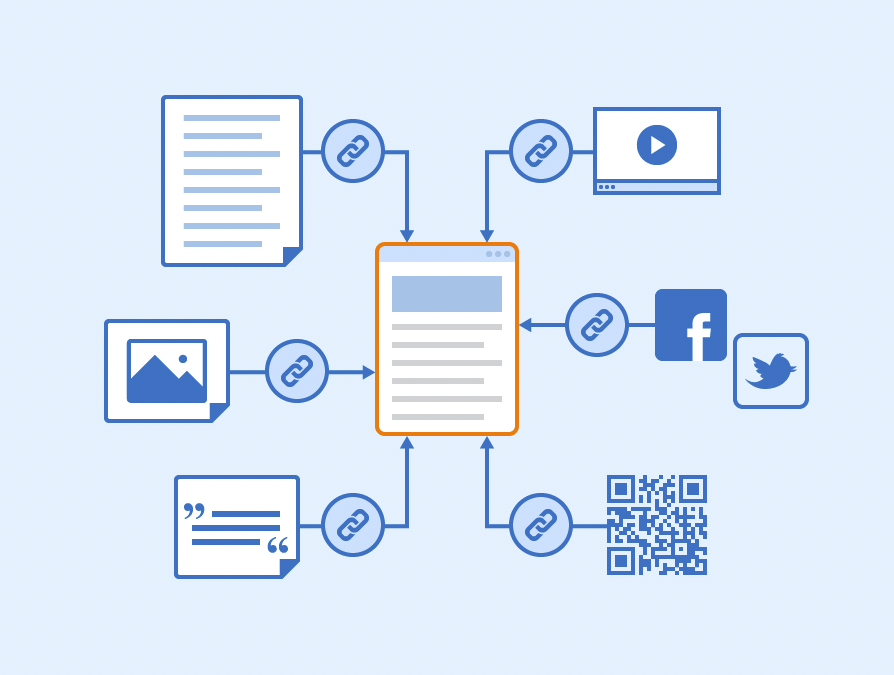
What are the best backlink strategies in 2024?
There are many but let’s just get into the main ones.
Best Backlink Strategies in 2024
#1 Guest blogging
This backlinking strategy is when you write a blog post for another website in your industry.
This is a great way to get backlinks because you’re giving the host website valuable content.
In return, they’ll often allow you to include 1 or 2 backlinks to your own website within your guest blog post.
Make sure that the website you’re guest blogging for is high-quality and relevant to your industry.
You don’t want to waste your time writing a guest blog post for a low-quality website as it won’t do much to help your backlink profile.
#2 Broken link building
This backlinking strategy is all about finding broken links on websites and then replacing them with links to your own website.
Here’s how it works:
- First, you find relevant websites that have broken links.
- Then, you contact the website owner and let them know that you have a similar piece of content that would make a great replacement for the broken link.
- Finally, if they agree, you replace the broken link with a link to your own website.
Broken link building is a great backlinking strategy because it’s quick, easy, and it can be very effective.
Plus, it’s a great way to build relationships with other website owners in your industry.
#3 Competitor backlink analysis
This backlinking strategy involves analyzing your competitor’s backlinks and then trying to get backlinks from the same websites.
To do this, you can use a backlink software or backlink analysis tool like Ahrefs or Majestic.
Just enter your competitor’s URL into the tool and then click on the “Backlinks” tab. This will show you all of the websites that are linking to your competitor’s website.
Once you have a list of potential backlinking opportunities, reach out to the website owners and see if they’d be willing to link to your website as well.
Competitor backlink analysis is a great way to find high-quality backlinking opportunities that you might not have otherwise found.
#4 Resource page backlinks
Resource page backlinks are when you get backlinks from websites that list helpful resources in your industry.
For example, if you have a website about SEO, you could get backlinked from an article that lists the “Top 10 SEO Resources.”
To find resource page backlinks, you can do a Google search for your keyword + “resources” or your keyword + “links.” This will show you a list of websites that might be willing to link to your website.
Then, reach out to the website owners and let them know that you have a resource that would be a great addition to their page.
Resource page backlinks are great because they’re often high-quality and relevant. Plus, they can be relatively easy to get.
#5 Infographic backlinks
Infographic backlinks are when you create an infographic and then get other websites to link back to it.
To do this, you first need to create an infographic that is both interesting and informative.
Then, reach out to other websites in your industry and let them know about your infographic. If they like it, they’ll often be willing to link back to it.
Infographic backlinks are great because they’re usually high-quality and they can be very effective. Plus, infographics are generally quick and easy to make.
#6 Profile creation backlinks
Profile creation backlinks are when you create profiles on various websites and include a link back to your website in your profile.
For example, many forums, social media sites, and directories will allow you to create a profile with a link back to your website.
Profile creation backlinks are great because they’re usually quick and easy to get. Plus, they can be very effective if you create profiles on high-quality websites.
#7 Write data articles that people will want to link to (Digital PR)
People love linking to data. It helps back up their argument.
This backlinking strategy is about writing articles that contain data that people will want to link to.
To do this, find data that is relevant to your industry and then write an article about it.
Make sure to include a link back to your website in the article so that people can easily find it.
Data articles are great because they’re usually high-quality and they can be very effective. Plus, they tend to be very shareable, which can help you get even more backlinks.
#8 Link exchange
Links are just a value exchange.
If two sites can add value to each other by linking, they can include each other’s links either in existing content (link insertion) or new guest posts.
7 Outside-the-Box Ways to QUADRUPLE your SEO Link Building
#9 Unlinked brand mentions (how to find them)
If you’ve been in the SEO space for a while, you know unliked brand mentions – they mention your site but don’t like to it.
Knowing how to use Google’s search bar to find these is an underrated skill.
For example, did you know there’s a simple query that displays mentions of your brand that aren’t hyperlinked?
You know what that means… Free backlinks!
All you have to do is type this in the search bar:
Intext:“[your brand name]” -[your website], -facebook[dot]com -twitter[dot]com
This pulls a list of the websites that mention your business but don’t link to it.
So let’s say your brand name is… Your Brand, and you have a yourbrand dot com website.
Here’s what you’d type:
Intext:”Your Brand” -yourbrand[dot]com, -facebook, -twitter
The Intext pulls mentions of your brand name, while “- yourbrand[dot]com,” “-facebook,” and “-twitter” exclude any shares of your website URL and any Facebook or Twitter mentions.
“Why exclude Facebook and Twitter?”
Well, since most of your mentions are coming from your own website and social media… It makes sense to exclude those so you get cleaner search results.
“What other websites should I omit from the results?”
That’s entirely up to you. You can exclude LinkedIn, Pinterest, and any other social media site you think is relevant.
Okay, now, it’s outreach time!
After you’ve identified the sites that mention you without linking to you, you can start contacting the website owners and asking them for a link to your website.
Somtimes, you’ll get a positive response. Linking back to a mentioned website is a common courtesy.
And if not… There’s never shame in asking.
For every 100 backlink related emails, it’s common to get about 5 positive responses. It’s a numbers game.
Should You Buy Backlinks for SEO? We Spent $1 Million to Find Out
Yes, you can get backlinks by spending.
But should you?
This answers the question.
Conclusion – Backlink Strategies
There you have it! These are seven of the best backlink strategies that you can use to build links to your website.
They include:
- Guest posting
- Broken link building
- Competitor backlink analysis
- Resource page backlinks
- Infographic backlinks
- Profile creation backlinks
- Write data articles that people will want to link to
- Unlinked brand mentions
Start implementing these strategies and see how they can help you get more backlinks to your website.
For more info, Matt Diggity explains the key pillars to a backlink strategy (relevance – trust – power).


![Backwards 3: How to Type "Ɛ" [EASY]](https://softwareblade.com/wp-content/uploads/2022/02/Screen-Shot-2022-02-19-at-9.03.25-PM-150x150.png)